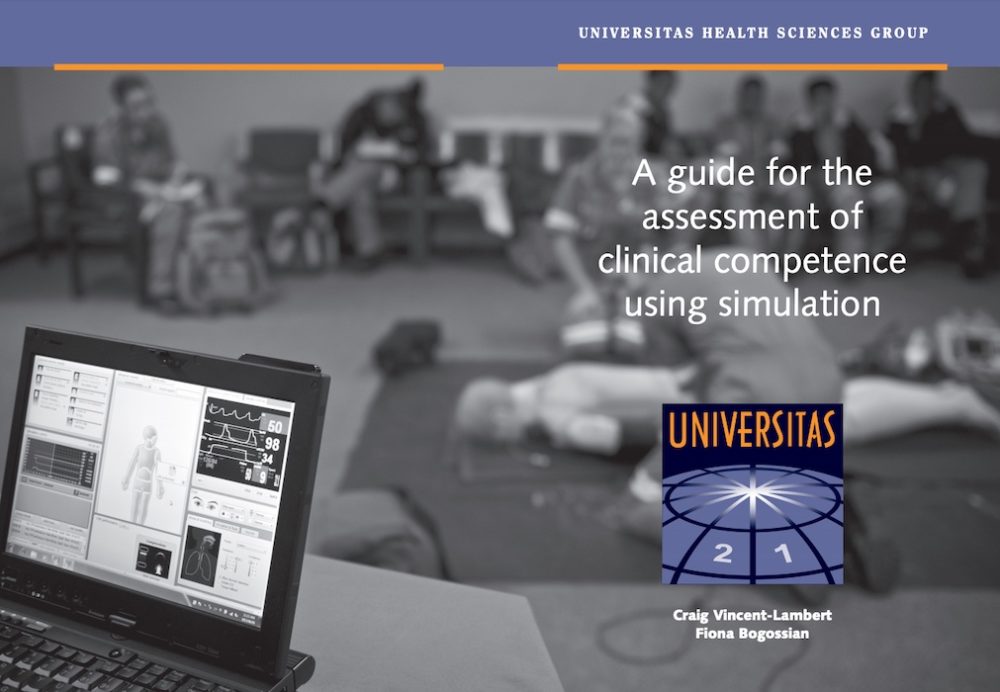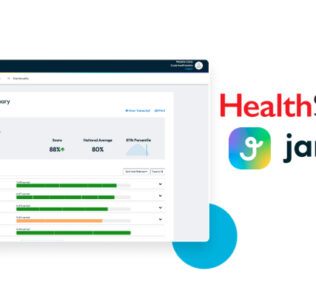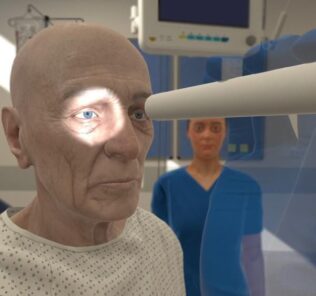Helpful Guide for the Assessment of Clinical Competence Using Simulation
Looking for a short but powerful guide on using Healthcare Simulation to assess clinical competence? Today we shared a 56 page Clinical Simulation Assessment Guide, led by A/Professor Fiona Bogossian from the University of Queensland and Professor Craig Vincent-Lambert of the University of Johannesburg, which was produced in 2017 by the U21 Health Sciences Group out of South Africa. The publicly available Field Guide is aimed at assisting novice simulation practitioners and health science academics to become more involved in the design and application of simulation for clinical teaching, learning and assessment.
In September 2016, a workshop was held in Birmingham to outline the results of a survey of the state of simulation in healthcare activities across the U21 Health Sciences Group. Workshop participants also discussed and debated some of the key issues in contemporary simulation practice with the objective to inform the development of a U21 Clinical Simulation Field Guide, and the identification of key issues for further research. Following the workshop in Birmingham, the layout, focus and content of the U21 Field Guide was finalized. The Field Guide is aimed at assisting novice simulation practitioners and health science academics to become more involved in the design and application of simulation for clinical teaching, learning and assessment. A guide for the assessment of clinical competence using simulation was presented to the U21 HSG community during the U21 Health Sciences Group Annual Meeting at the University of Johannesburg in September 2017. Contributors include Campbell, S.H., Mandusiak, Al, Botelho, M., Buckley, S., Campbell, R., Stein, C., & Makkink, A.
U21 Clinical Simulation Guide Intro
Sponsored Content:
The awareness of medical simulation as a pedagogy in health sciences has developed rapidly over the course of the last two decades. And in response, we have seen the parallel emergence of simulation interest groups at local, national and international levels; an increase in scholarship in the field and; an increase in resources available to guide simulation in clinical health sciences education. So why did the team develop this guide?
The idea behind the creation of this guide emanated from workshops and collegial discussions between health science educators within the Universitas 21 Health Sciences Group. Through their engagements it became evident that whilst clinical simulation practices are rapidly gaining traction in health professional education, not everyone is equally capacitated to make full use of this powerful and exciting teaching, learning and assessment methodology. Changing the way in which organizations teach and learn and the implementation of any new pedagogical approach may be a potentially stressful and daunting task.
For this reason, the team specifically chose to focus and position this collaborative U21 contribution in the form of a guide, catering primarily for emerging and novice simulation practitioners, with a focus on assessment of clinical competence. They positioned this guide as a useful tool and resource document for health science educators who may be working in systems where the use of clinical simulation may not currently exist or, is in its infancy. Given the intended audience and the focus of this guide, the Authors did not set out to develop a comprehensive, authoritative text on clinical simulation and its role in the teaching, learning and assessment of health science students.
Rather they have purposefully limited the length and the scope of contributions for the guide so as to focus on core principles, valuable information, and practical tips that may assist emerging and novice simulation practitioners to reflect on and possibly improve their current simulation practices. Consequently, citations have been limited to key references and resources. Should one becomes aware of any unintentional oversights the Authors welcome submission of these for inclusion. U21 colleagues from all regions contributed to this guide. They invited them to participate because of their longstanding scholarship and/or pragmatic expertise in the field of simulation for health science clinical competence. Without exception our experts contributed enthusiastically and generously to the development of this guide.
Sponsored Content:
The Editors aim was to weave their submissions into a cohesive whole without diminishing the passion for simulation evident in their individual writing. They extend our gratitude to each of the contributors, and look forward to wider contributions from others to the U21 Simulation Community of Practice in future.
The guide begins with a clarification of selected terms and concepts applicable to clinical simulation before moving on to present options and advice on the design, construction and conduct of clinical simulations. The guide also provides suggestions regarding how one may make use of clinical simulation to gauge clinical competence and to conduct research in the simulated environment. They hope simulation centers will find this guide enjoyable reading and that it may assist you in becoming more involved in the design and application of simulations within your individual learning contexts.
Download the Free Access 56 Page Simulation Guide Here!
Lance Baily, BA, EMT-B, is the Founder & CEO of HealthySimulation.com, which he started while serving as the Director of the Nevada System of Higher Education’s Clinical Simulation Center of Las Vegas back in 2010. Lance is also the Founder and acting Advisor to the Board of SimGHOSTS.org, the world’s only non-profit organization dedicated to supporting professionals operating healthcare simulation technologies. His co-edited Book: “Comprehensive Healthcare Simulation: Operations, Technology, and Innovative Practice” is cited as a key source for professional certification in the industry. Lance’s background also includes serving as a Simulation Technology Specialist for the LA Community College District, EMS fire fighting, Hollywood movie production, rescue diving, and global travel. He and his wife Abigail Baily, PhD live in Las Vegas, Nevada with their two amazing daughters.
Sponsored Content:




















